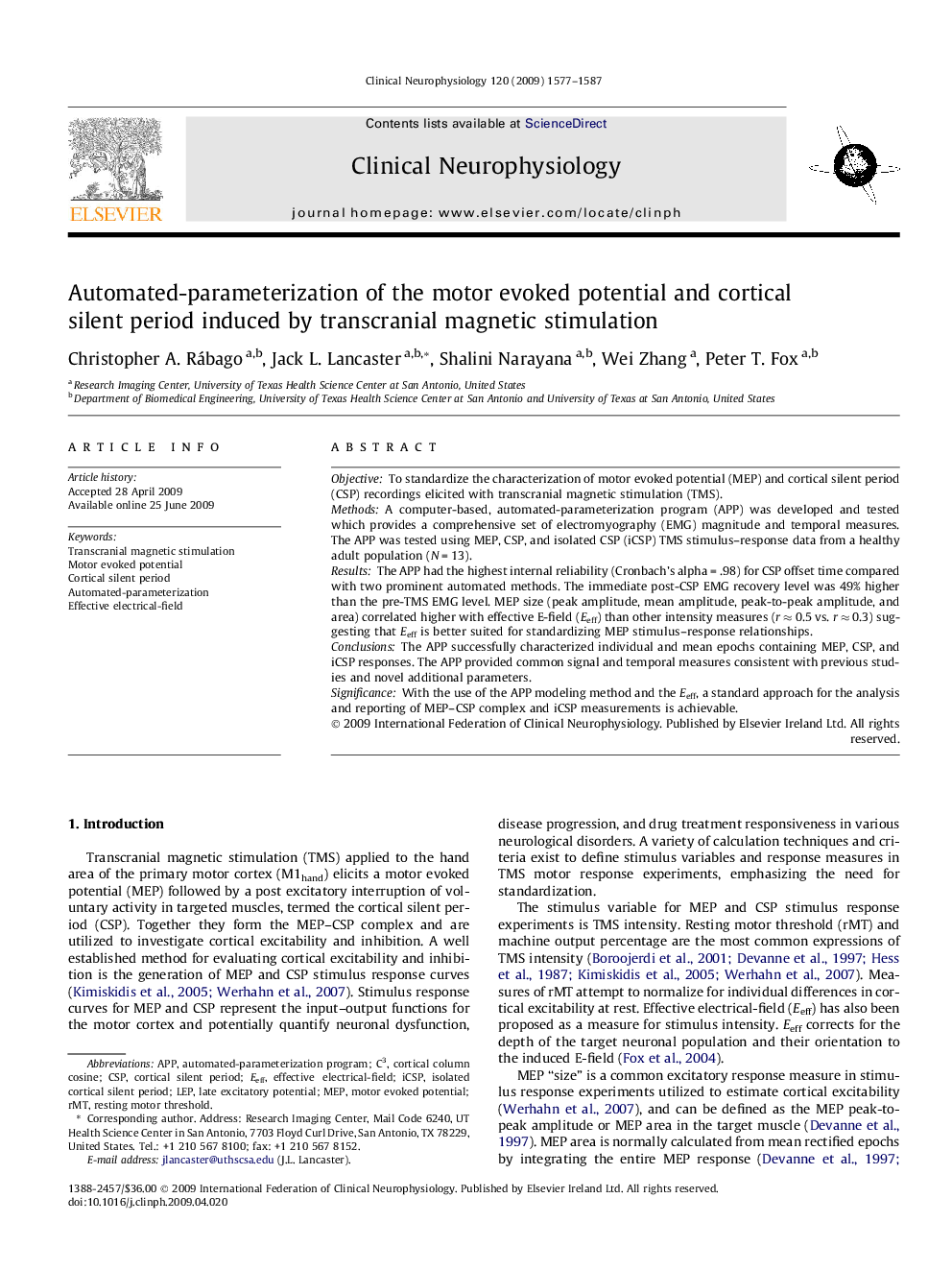| Article ID | Journal | Published Year | Pages | File Type |
|---|---|---|---|---|
| 3046287 | Clinical Neurophysiology | 2009 | 11 Pages |
ObjectiveTo standardize the characterization of motor evoked potential (MEP) and cortical silent period (CSP) recordings elicited with transcranial magnetic stimulation (TMS).MethodsA computer-based, automated-parameterization program (APP) was developed and tested which provides a comprehensive set of electromyography (EMG) magnitude and temporal measures. The APP was tested using MEP, CSP, and isolated CSP (iCSP) TMS stimulus–response data from a healthy adult population (N = 13).ResultsThe APP had the highest internal reliability (Cronbach’s alpha = .98) for CSP offset time compared with two prominent automated methods. The immediate post-CSP EMG recovery level was 49% higher than the pre-TMS EMG level. MEP size (peak amplitude, mean amplitude, peak-to-peak amplitude, and area) correlated higher with effective E-field (Eeff) than other intensity measures (r ≈ 0.5 vs. r ≈ 0.3) suggesting that Eeff is better suited for standardizing MEP stimulus–response relationships.ConclusionsThe APP successfully characterized individual and mean epochs containing MEP, CSP, and iCSP responses. The APP provided common signal and temporal measures consistent with previous studies and novel additional parameters.SignificanceWith the use of the APP modeling method and the Eeff, a standard approach for the analysis and reporting of MEP–CSP complex and iCSP measurements is achievable.
